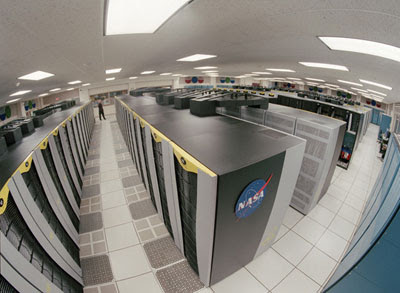
A NASA supercomputer has provided the most realistic simulation of the evolving universe that scientists have produced to date, giving researchers clues to how the cosmos continues to change and grow, according to the space agency.
NASA's Pleiades supercomputer, which is located at the NASA Ames Research Center, used simulation code called Bolshoi to show the distribution of dark matter across a span of one billion light years. Dark matter--a substance with much gravity that doesn't interact with normal matter and cannot be directly observed--comprises about 25% of the universe, and is the subject of much of NASA's work to study the origins and evolution of the universe.
Researchers hope to use the simulation to explain how galaxies and other aspects of the universe were formed and have evolved since the Big Bang, which occurred 13.7 billion years ago and is considered the origin of the universe, according to NASA.
Custom software tools from NASA's data analysis and visualization team produced images and animations that show the formation and evolution of so-called "dark matter halos," which are the basis for the formation of galaxies. These are allowing scientists to analyze the results of the simulation for further research, according to NASA.
Alligator boots
Diamond Studs
Read More